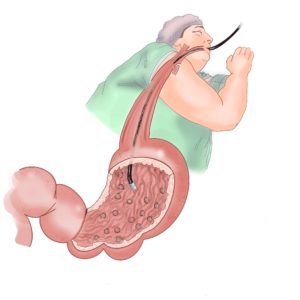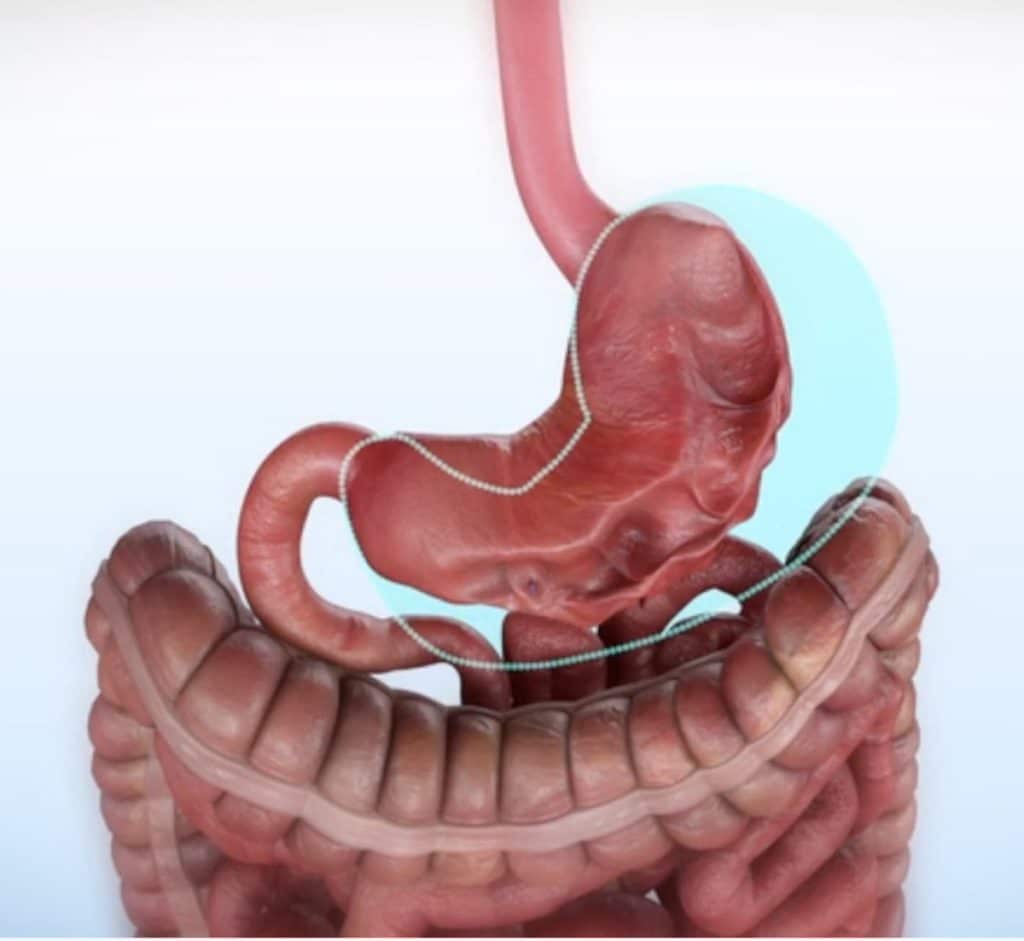Table of Contents
- Endo Band Method, What is It Exactly?
- Rationale and Benefits of Endo Band Method:
- Is Endo Band Effective for Weightloss?
- What Are the Potential Complications of EndoBand Method?
- How Is the Recovery Process After the Endo Band Procedure?
- Things You Should Know After the Endo Band Procedure:
- What are the Recommendations for Exercise After Endo Band Procedure?
- What are the Benefits of the Endo Band Method Compared to Other Bariatric Procedures?
- Conclusion:
Obesity is a global health problem that affects millions of people and increases the risk of various chronic diseases, such as diabetes, heart disease, and cancer. While lifestyle changes, such as diet and exercise, are the first-line treatment for obesity, they are often insufficient or unsustainable for many patients. Bariatric surgery, which involves altering the anatomy of the stomach and/or intestines to reduce food intake and absorption, is an effective option for patients with severe obesity and comorbidities. However, bariatric surgery also has some drawbacks, such as invasiveness, cost, complications, and long-term nutritional deficiencies.
Therefore, there is a need for alternative methods that can achieve significant and durable weight loss without surgery. Endoscopic bariatric therapies (EBTs) are emerging as promising options that use flexible devices inserted through the mouth to modify the gastrointestinal tract. EBTs are less invasive, safer, cheaper, and reversible than surgery, and can be performed as outpatient procedures under sedation. Some of the EBTs that are currently available or under investigation include intragastric balloons, endoscopic sleeve gastroplasty, aspiration therapy, and duodenal-jejunal bypass liners.

Endoscopic Interventions
Endo Band Method, What is It Exactly?
One of the newest EBTs is the Endo Band method, which was developed by Dr. Mohamed Abeid from Egypt and published in the Endoscopy journal in 2021. This innovative approach offers a promising solution for weight loss with its minimally invasive nature and affordability. Unlike traditional bariatric surgeries, this method is minimally invasive and affordable.
Rationale and Benefits of Endo Band Method:
The Endo Band method is based on the principle of endoscopic band ligation, which is commonly used to treat bleeding esophageal varices. The technique involves placing multiple elastic bands around the gastric cardia, the junction between the esophagus and the stomach, to create a narrow passage that restricts food intake and induces early satiety. The bands are expected to fall off spontaneously after 4 to 6 weeks, leaving behind ulcers that heal with scar formation, resulting in a permanent reduction of the gastric inlet.
The Endo Band method is performed using a standard upper endoscope and a multi-band ligator device. The procedure takes about 15 to 20 minutes and does not require any special equipment or training. The number of bands applied depends on the size of the gastric cardia, but usually ranges from 25 to 35. The procedure is well tolerated by most patients and has a low risk of complications, such as bleeding, perforation, or infection. The most common side effects are pain and sometimes vomiting, which last for 1-2 days.

Is Endo Band Effective for Weightloss?
The Endo Band method has shown promising results in terms of weight loss and improvement of obesity-related comorbidities. In a pilot study of 20 patients with a mean body mass index (BMI) of 41.6 kg/m2, the Endo Band method achieved a mean excess weight loss (EWL) of 38.7% at 6 months and 54.2% at 12 months. The procedure also improved the patients’ quality of life, blood pressure, blood glucose, and lipid profile. No major complications or mortality were reported in the study.
The Endo Band method is currently being evaluated in a multicenter, prospective, randomized, controlled trial led by Dr Abeid. Dr. Murat Ustun, one of the most innovative pioneers of endoscopic bariatric methods in Turkey is also a collaborator of this study. Dr. Ustun is the founder of Istanbul Bariatric Center, a leading center for obesity treatment that offers a comprehensive and personalized approach to each patient. Dr. Ustun has extensive experience and expertise in various EBTs, such as intragastric balloons, endoscopic sleeve gastroplasty, and revisional endoscopic procedures. He is also involved in several research projects and international collaborations to advance the field of endoscopic bariatric surgery.
The Endo Band method has the potential to fill the gap between lifestyle interventions and bariatric surgery, and to provide a new paradigm for obesity management. More studies are needed to confirm the long-term efficacy and safety of the Endo Band method, and to compare it with other EBTs and surgical procedures.
The Endo Band method works by placing a small, adjustable band around the stomach to restrict food intake, leading to significant weight loss. This technique is not only effective but also minimally invasive, reducing the risks associated with traditional bariatric surgeries. Patients can expect to achieve substantial weight loss results with this method, improving their overall health and quality of life.
What Are the Potential Complications of EndoBand Method?
The Endo Band method, although minimally invasive, may still pose certain risks and potential complications. Some of the risks associated with this method include:
1. Developing Ulcers: Actually the method’s philosophy is creating small ulcers and healing process. When the stomach tissue heals, scarring process cause some retractions and finally decreases the elasticity of the adjacent mucosa. The ultimate goal is to achieve a mild restriction in stomach volume and besides this, an early satiety with a smaller food intake.
2. Infection: Infections may be expected but in clinical series the rate of infection is very low because of the acidity of the gastric environment. In the followups it may be presented with symptoms such as tenderness, mild fever, erythema, or even abscess formation. Late infections may manifest as vague abdominal symptoms.
3. Perforation: Gastric wall perforation is a potentially serious complication but because of the band contains mostly mucosa and a bit of muscular layer of the gastric wall, it’s again quite an unexpected complication. In Abeid’s series there is no serious major complications and no perforations.
4. Pouch Dilation: If the patient compliance is low, like all other restrictive interventions, gastric wall can be expanded and weightloss success could be limited.
It is essential for patients considering the Endo Band method to be aware of these potential risks and complications and discuss them thoroughly with their healthcare provider before undergoing the procedure.

How Is the Recovery Process After the Endo Band Procedure?
After undergoing the Endo Band method procedure, the recovery process typically involves the following steps:
1. Immediate Post-Procedure Care: After the procedure, patients are monitored in a recovery room for any immediate complications. Medical staff will observe for any signs of discomfort or adverse reactions to the procedure. Endo Band is an outpatient procedure, but sometimes we prefer to keep our patients in the hospital for their safety and comfort for the first day.
2. Post-Procedure Instructions: Patients will receive specific instructions on how to care for themselves post-procedure. This may include guidance on diet, medication, physical activity, and any restrictions on eating or drinking.
3. Recovery at Home: It is advisable to have someone assist at home during the initial recovery period. Patients may experience some discomfort or changes in their eating habits, and having support can be beneficial.
4. Return to Daily Activities: Recovery from Endo Band method is generally quick, with most patients able to resume their daily activities within a few days. However, it is essential to follow the post-procedure guidelines provided by healthcare providers for optimal recovery.
Endoscopic sleeve gastroplasty, a similar minimally invasive weight-loss procedure, also involves a quick recovery process due to its minimally invasive nature, reducing the risk of complications and allowing patients to return to their daily activities promptly.
Things You Should Know After the Endo Band Procedure:
After undergoing the Endo Band method procedure, it is recommended to wait before resuming normal activities. Here are the general guidelines based on the search results:
1. Activity Restrictions:
- Driving: Avoid driving for at least 24 hours after the procedure or until the effects of any sedatives wear off.
- Physical Activity: Start walking around as soon as you get home, but avoid strenuous activities for a few days. Gradually increase your activity level as tolerated.
2. Diet:
- Mainly liquid diet for the first 2 weeks, then soft diet 2 weeks, which is very similar to other weightloss procedures.
Resume a normal diet as tolerated, starting with light meals after this special diet period. Stay hydrated and follow any dietary guidelines provided by healthcare providers.
3. Post-Procedure Care:
- Wear loose, non-binding clothes and avoid heavy lifting for several weeks.
- If you experience constipation use some herbal remedies or medications like Dulcolax.
4. Follow-Up:
- Attend scheduled follow-up appointments with healthcare providers.
- Report any unusual symptoms or concerns promptly.
It is essential to follow these recommendations to ensure a smooth recovery and optimal outcomes after the Endo Band method procedure.
What are the Recommendations for Exercise After Endo Band Procedure?
During the recovery period after the Endo Band method procedure, it is essential to engage in appropriate exercises to promote healing and maintain overall health. Here are some recommended exercises based on the search results:
1. Walking: Walking is a low-impact exercise that can be beneficial during the early stages of recovery. It helps promote circulation, prevent blood clots, and aids in overall healing.
2. Resistance Band Training: Using resistance bands can help strengthen various muscle groups gradually. These bands provide constant tension and allow controlled movements, making them suitable for post-operative exercise routines.
3. Stationary Bike: A stationary bike provides a safe and low-impact workout that can elevate the heart rate without putting excessive strain on the body. It is a quick and easy exercise to incorporate early on in the recovery process.
4. Bodyweight Workouts: Starting with basic bodyweight exercises can help build strength and flexibility without overexerting the body. These exercises can be tailored to individual fitness levels and gradually increased as tolerated.
5. Yoga: Yoga can help increase flexibility, tone the body, improve metabolism, and promote blood flow, aiding in healing and long-term weight loss.
It is important to consult with healthcare providers before starting any exercise regimen after the Endo Band method procedure to ensure that the activities are safe and appropriate for your individual recovery needs.

What are the Benefits of the Endo Band Method Compared to Other Bariatric Procedures?
The Endo Band method offers several advantages compared to other bariatric procedures:
1. Safety Profile: The Endo Band method has a very appealing safety profile, with most complications being non-life-threatening and manageable non-operatively or laparoscopically.
2. Minimally Invasive: This technique is extremely minimally invasive, leading to faster recovery times and fewer complications for patients.
3. Affordability: The Endo Band method is the most cost-effective option, even less expensive than intragastric balloon treatments, for individuals seeking weight loss solutions.
4. Adjustability: The adjustment of the silicone band number allows for personalized adjustments to optimize weight loss results.
5. Promising Weight Loss Results: While it may not offer as much weight loss as some other procedures like LRYGB or sleeve gastrectomy, the Endo Band method provides reasonably good weight loss results with minimal morbidity.
Conclusion:
The Endo Band method represents a promising advancement in weight loss treatments, providing patients with a safe, effective, and affordable option for achieving their health goals. With experts like Dr Abeid and Dr. Murat Ustun leading the way, this technique is set to revolutionize the field of endoscopic bariatric treatments worldwide.
The Endo Band method is distinct from Laparoscopic Adjustable Gastric Banding (LAGB) and Endoscopic Sleeve Gastroplasty. LAGB involves placing an adjustable band around the top part of the stomach to create a small pouch, while Endoscopic Sleeve Gastroplasty sutures the stomach to reduce its size without any external cuts. The EndoBand includes neither removal, nor stitches.
Dr. Murat Ustun, a pioneer in endoscopic bariatric methods in Turkey, is involved in an international multicentric study on the Endo Band method, highlighting its global acceptance and effectiveness in weight loss treatments. This innovative approach offers a safe and effective solution for individuals struggling with obesity, emphasizing minimal invasiveness and promising outcomes in weight management.
In conclusion, the Endo Band method stands out for its safety, minimally invasive nature, affordability, adjustability, and promising weight loss effects compared to other bariatric procedures.

